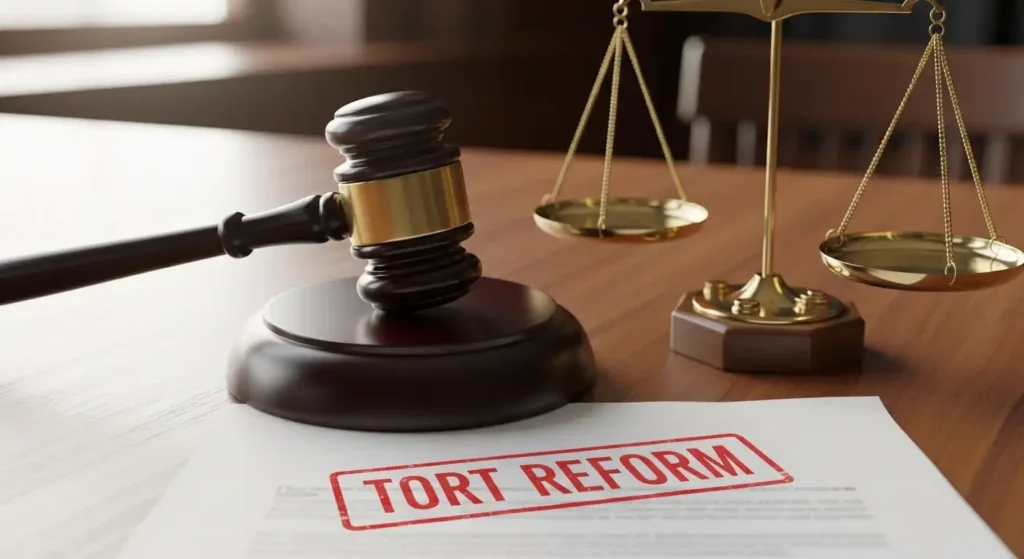As of 2025, California has implemented new tort reforms designed to reshape the way personal injury claims are handled. These changes are a significant shift in the legal landscape, offering both opportunities and challenges for individuals seeking compensation. With the potential to affect everything from settlement negotiations to courtroom strategies, it’s crucial to understand how these reforms may impact your case.
This blog will break down the key aspects of California’s new tort reforms, explain how they affect personal injury claims, and offer tips on how claimants can navigate the new legal terrain.
Understanding the New Tort Reforms:
 The tort system in California has undergone significant changes in 2025, primarily aimed at improving efficiency and curbing excessive litigation costs. These reforms introduce new caps on damages, alter the way fault is determined, and expedite litigation procedures. Let’s explore each of these key changes.
The tort system in California has undergone significant changes in 2025, primarily aimed at improving efficiency and curbing excessive litigation costs. These reforms introduce new caps on damages, alter the way fault is determined, and expedite litigation procedures. Let’s explore each of these key changes.
1. Caps on Non-Economic Damages:
One of the most significant changes under the new tort reforms is the introduction of caps on non-economic damages. Non-economic damages refer to compensation for pain and suffering, emotional distress, and loss of enjoyment of life. These are damages that do not have a specific monetary value but are calculated based on the severity of the injury and its impact on the victim’s life.
Under the new reforms, the amount that can be awarded for non-economic damages has been capped. This means that, regardless of the extent of the injury, the maximum amount a claimant can receive for pain and suffering is now limited by law. For some, this cap may feel like a limitation on their ability to seek justice, but it is essential to understand that other avenues for compensation still exist.
2. Modified Comparative Fault Rules:
California has modified its comparative fault rules as part of the 2025 tort reforms. Comparative fault refers to the percentage of fault that each party bears in an accident. Under the new rules, if a claimant is partially responsible for their injuries, their compensation may be reduced based on their share of the fault.
For example, if a claimant is found to be 20% at fault for an accident, they will only be entitled to 80% of the compensation they would otherwise have received. The revised rules aim to create a more balanced and fair system, but they also mean that individuals involved in complex multi-party accidents may need to provide more detailed evidence to support their case.
3. Streamlined Litigation Processes:
 To expedite personal injury claims, California has introduced measures to streamline litigation processes. These changes are designed to reduce delays and inefficiencies in the court system, allowing cases to move through the legal process more quickly. This includes shorter deadlines for filing motions, limits on the amount of time attorneys can spend on certain tasks, and stricter rules regarding evidence and discovery.
To expedite personal injury claims, California has introduced measures to streamline litigation processes. These changes are designed to reduce delays and inefficiencies in the court system, allowing cases to move through the legal process more quickly. This includes shorter deadlines for filing motions, limits on the amount of time attorneys can spend on certain tasks, and stricter rules regarding evidence and discovery.
While these changes may benefit claimants who want a quicker resolution, they also place more pressure on plaintiffs and defendants alike to act swiftly. It’s important for anyone involved in a personal injury case to stay informed of these deadlines and requirements to avoid missing critical opportunities.
Implications for Personal Injury Claimants:
For individuals pursuing a personal injury claim, the changes in California’s tort system can have far-reaching consequences. The impact of these reforms will depend on the specifics of each case, but there are some general implications that all claimants should be aware of.
1. Settlement Negotiations:
With the new caps on non-economic damages, settlement negotiations may become more complex. Insurance companies and defendants will likely offer lower settlements, knowing that the maximum non-economic damage award is now limited. On the other hand, claimants may find it more difficult to secure a settlement that fully reflects the pain and suffering caused by their injuries.
2. Litigation Strategies:
The expedited litigation processes will require plaintiffs and defendants to adjust their strategies. Personal injury attorneys will need to be more efficient in managing cases, ensuring they meet all deadlines and submit required documentation on time. For claimants, this may mean a faster resolution, but it could also limit the time available to gather critical evidence or seek additional expert opinions.
3. Insurance Considerations:
Insurance companies are likely to adjust their approach to personal injury claims in response to the new tort reforms. They may offer lower settlements to claimants, particularly in cases where the new comparative fault rules come into play. Claimants will need to be more diligent in evaluating settlement offers to ensure they are receiving fair compensation for their injuries.
How Claimants Can Protect Their Rights:
Given the complexities introduced by the new tort reforms, it’s important for claimants to take proactive steps to protect their rights and maximize their chances of a successful outcome. Here are some strategies to consider:
1. Consult Experienced Attorneys:
Navigating the new tort system requires expertise and an understanding of the legal changes. Claimants should work with experienced personal injury attorneys who are well-versed in the 2025 tort reforms. Attorneys can provide invaluable guidance on how the reforms affect a specific case and help clients pursue the best possible outcome under the new system.
2. Document Everything:
Thorough documentation is critical in personal injury cases, especially in light of the new comparative fault rules. Keeping detailed records of medical treatments, expenses, and the impact of the injury on your daily life can help strengthen your case. Additionally, if you are partially at fault for the accident, having a comprehensive record can help minimize the reduction in your compensation.
3. Stay Informed:
The legal landscape is constantly evolving, and it’s important for claimants to stay informed about any further changes to the tort system. Regularly consulting with your attorney and keeping an eye on relevant legal developments can help ensure that you are always prepared to adjust your strategy if necessary.
Conclusion:
The new tort reforms in California, effective in 2025, bring significant changes to personal injury claims. From caps on non-economic damages to modifications in comparative fault rules, these reforms are reshaping the way injury victims pursue justice. While these changes present new challenges, they also provide an opportunity for claimants to adapt their strategies and secure fair compensation.
By staying informed, documenting injuries and expenses, and consulting with experienced attorneys, personal injury claimants can navigate these reforms and protect their rights. With the right approach, individuals can continue to seek the compensation they deserve, even in the face of these new legal challenges.

